Teatro RegioRegio Theatre5 min walking from B&B Rubra |
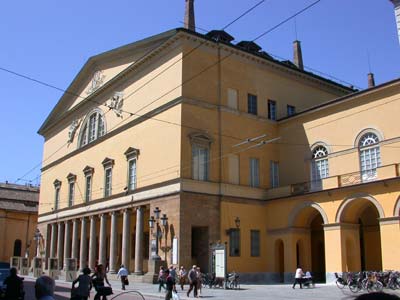 |
|
|
The current Regio Theatre , which was named only after the Italian Unification (before it was simply called Ducal Theatre), was built under Maria Luigia from 1821—1829 to keep the heredity of the Ducal Theatre located in the Palace of the Reserve, between the current via Cavour and via Melloni where today there are the Postal Offices and Literature Society. Since 1829 and for the entire 18th century, the theatre welcomed the best singers and international operas becoming one of the most famous stages for Italian opera in the 1700s. It must be emphasized that the present Regio was not born out of the blue and suddenly became one of the birthplaces of Italian melodrama—this would create a misunderstanding: instead it is truer to say that the new theatre generously and enthusiastically welcomed the new romantic melodrama based on a tradition deeply rooted a century and half ago, but by then it requested different structures, capacities and acoustics. The area for the new theatre was located in what was once the convent of St. Alessandro, one of the most important convents in the city’s history that had been closed in 1811 under Napoleon. Nicola Bettoli, the personal architect of Maria Luigia, projected a main building of The interior also continued the theme of Ionic columns in the foyer, which support a lacunar ceiling. One can still see the now closed trapdoors on the floor, which were used to diffuse heat in the 19th century, following the length of the central corridor to the orchestra seats and the orchestra pit. The theatre is comprised of the orchestra seats, four orders of tier-boxes and a grand balcony. The famous curtain (14x10.5 meters) painted by Giovanni Battista Borghesi (1790-1846) represents the Triumph of Knowledge , into which one can read an affected allegory of the Ludovican government. Borghesi was also commissioned to paint the frescoes of the ceiling above the cavea with images of drama from which hangs a great chandelier ( The Grand Foyer , reachable by both a stairway that is tucked into a corner and from the third-tier box, is made up of a large room and a little side room (the “Greek parlor”). It was decorated in the Neoclassic style by Giovanni Azzi and Alessandro Cocchi on the ceiling, and Stanislao Campana for the walls. Recently, it underwent a massive restoration project after the ones in 1869 and 1955, and today it presents a newly restored stage, a polished Grand Foyer, a refurbished floor, and a new climate control system that flows under the chairs.
The inauguration occurring on May 16, 1829 , was given over to Vincenzo Bellini who, having made hasty agreements and encumbered by circumstances ended up recycling (“making a parody of”) a part of the material already written in the Zaira , which had been unsuccessful. That one evening caused such intense discussion, that historians still talk about the true facts and reasons of the protest. The written score arrived late, a sign of a rushed composition and lack of desire: the librettist, Romani, with a classic captatio benevolentiae forced Bellini to ask comprehension for his own work in the preface of the printed edition. After the controversy unleashed in the city because of the choice of a composer who was not yet considered famous, even for the refusal of giving a Parmesan opera composer the commission of writing the musical score, for the continual delays in the consignment of the music (which put back the theatre opening many times), the delay of the grand opening became quite alarming. The opera crashed, except for the third scene of the first act and in spite of the presence of a great star such as Luigi Lablache. Bellini had nothing more to do with |
Auditorium Paganini |
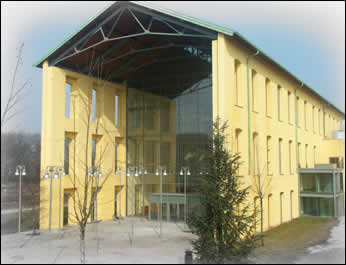 |
|
| The new citizen Auditorium by the architect, Renzo Piano , is built upon the remnants of the walled structure of the Eridania Sugar Factory (Zuccherificio Eridania). It shows an admirable work of connecting the past and future, between two epochs that are by now truly distant. The factory represented the remote and productive 1900s , now saved and given back to the city. It is still perfectly recognizable thanks to the presence of the chimney, a true symbolic element. Then, there is the third millennium, which is the age of information, of immateriality, and of the culture diffused in real time. The workspace and that of the machines has been regenerated and transformed into a space for culture and a rediscovery of humanity. But these passages and mutations are neither automatic nor casual. They are experiments that only succeed under extraordinary conditions. The genius of Renzo Piano , the unanimous master of international architecture, made sure that the experiment was not only executed in a perfect way, but that the result occurred as if from a spontaneous and absolutely natural transformation. The material solidity of the architectural work dissolves allowing the space to resound and become perfectly and naturally livable. The immense windows that go from head to toe of the building allow the internal space to flood with light, the green of the park, the air and the music. Too often cities mutate and transform leaving behind parts of their histories, memories get lost; witnesses and paths are irretrievable. In this case, however, to confirm that the operation was successful means to perceive distinctly that the city did not give up a part of itself and that the new structure seems to have been born from its very foundations, in this case on the factory’s memory, of the human work and the machines. |
Teatro DueTheatre 2 |
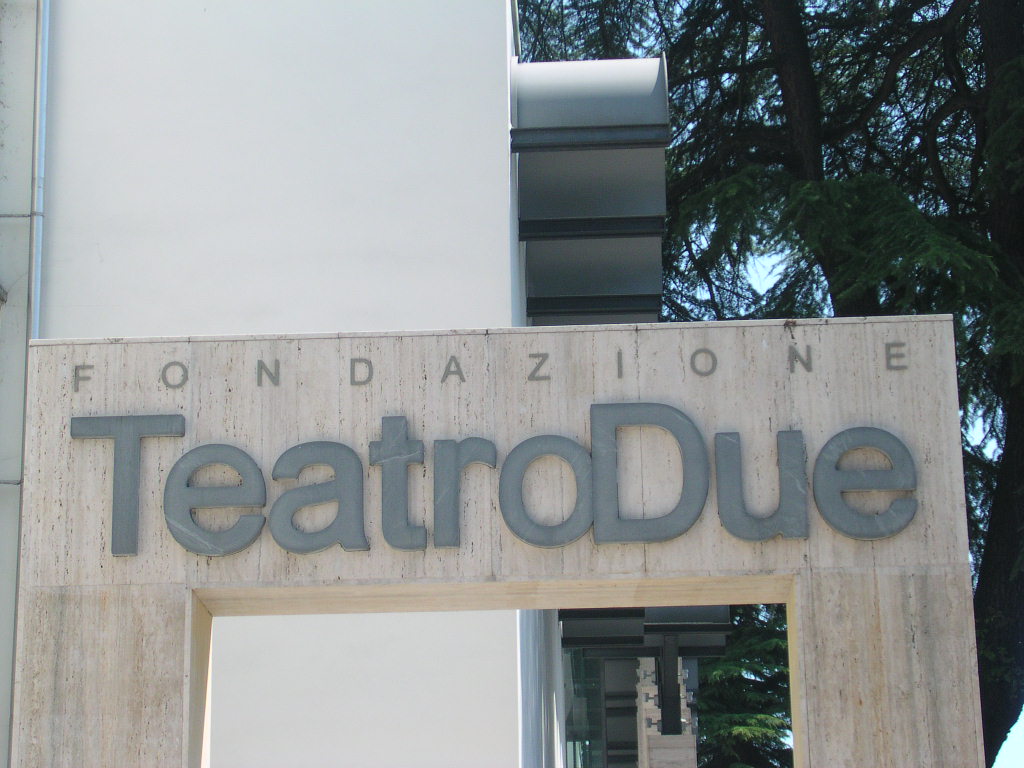 |
|
|
The "Fondazione Teatro Due" was founded in 2002 and acts as guidelines to support the Italian and European drama, the development of classical theater, research of new techniques and styles. The idea is that of a structure which might serve as a meeting point between different artistic, marketing and public. |
Teatro FarneseFarnese Theatre |
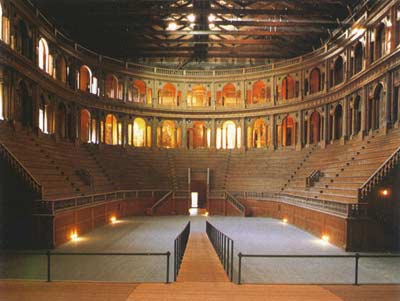 |
|
|
The imposing wooden doorway of the theatre Farnese is nowadays the entrance to the National Gallery. |
Teatro PezzaniPezzani Theatre5 min walking from B&B Rubra |
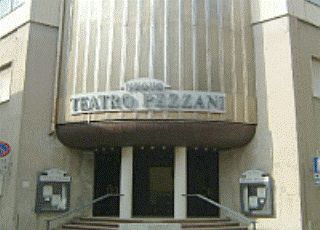 |
B.go San Domenico, 7 Oltretorrente area 43125 Parma
|
|
The current space called the New Theatre Pezzani is a result of the modernization and adaptation to current standards of old Theatre Pezzani, born in |
BACK TO "ART AND CULTURE"
